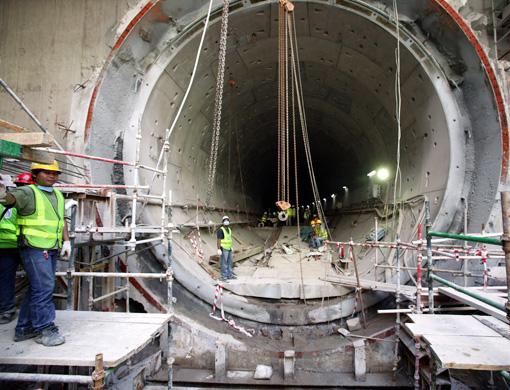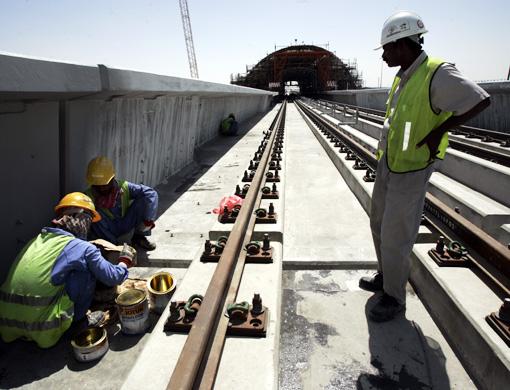A major decision regarding the design of the metro project is whether to go underground or above ground. The ideal solution would be to have it all on grade (on the existing ground level) as that would be the cheapest option, both for laying track and for the construction of the metro stations and interchanges. Having to excavate underground is the least desirable option. This is a photograph of one of the tunnels underneath the old Dubai Deira area for the Red Line of the Dubai Metro.

It is 9m wide and the excavation has taken more than two years. The residents in the buildings above it have been living a nightmare with shaking walls and floors, babies crying and blocked roads. Once completed, an underground system like the one they have in London would be great for Kuwait. We have very little space above ground for trains to maneuver and you can bet that nobody would want to live next to noisy shaky train route. However, building underground will cost about twice as much as having a raised track, as they do on most of the line in Dubai.

The advantages of the raised track are that they can pass over existing roads and highways without deeply modifying them while also creating the potential for new urban modalities in the space underneath it. Kuwait also has a major problem in that our water table is too high and contaminated with hydrogen sulfide:
Hydrogen sulfide occurs in high concentration (10–200 mg/l) in different parts of Kuwait City and its suburbs at relatively shallow depths (15–40 m from the surface). This was revealed by drilling through the aquifer system underlying the city and sampling and analyzing the ground water at the drilled locations.
-Water Resources Division, Kuwait Institute for Scientific Research
Hydrogen sulfide (H2S) is a colorless, toxic and flammable gas. If you go near the Dar al-Awadhi building and the area behind it you will smell H2S seeping out of the ground. It is a major impediment to the excavation of any underground tunnels for the metro project. However, as we shall see from studying the urban fabric of our city, we will begin to realize that some areas must be accessed underground. This is because of security, political or logistical reasons that force us to go down below. The study commissioned by the Kuwait Overland Transport Union calls for 60km of the 170km project be underground (35%). Where would the underground lines be? How would they transition from above ground to underground? There needs to be a long linear free space to allow enough room for the train to go under. A grade of anything above %12 is not very comfortable. Is there room in Kuwait to do all this?
